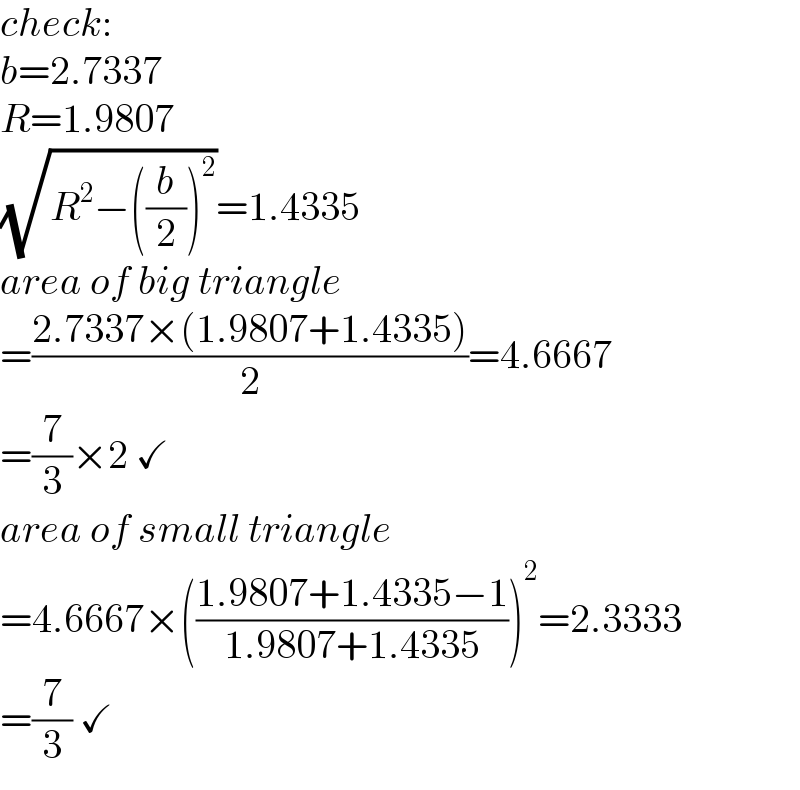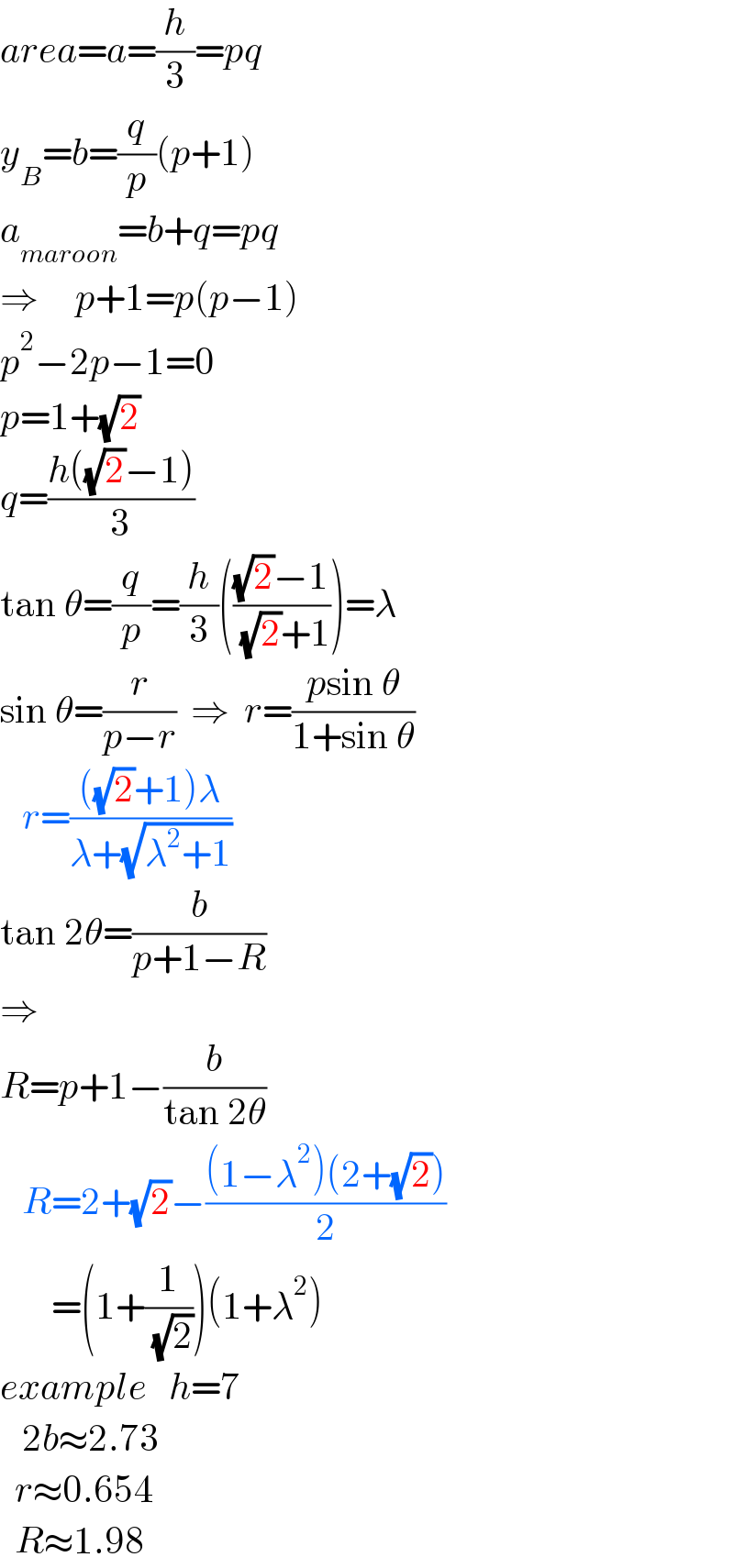
Question and Answers Forum
Question Number 164305 by ajfour last updated on 16/Jan/22

Commented by ajfour last updated on 16/Jan/22

Answered by mr W last updated on 16/Jan/22

Commented by mr W last updated on 16/Jan/22
![area of each region is ((h×1)/3)=(h/3) (((R+(√(R^2 −(b^2 /4)))−1)/(R+(√(R^2 −(b^2 /4))))))^2 =(1/2) ((R+(√(R^2 −(b^2 /4)))−1)/(R+(√(R^2 −(b^2 /4)))))=(1/( (√2))) (1/(R+(√(R^2 −(b^2 /4)))))=1−(1/( (√2)))=(((√2)−1)/( (√2))) R+(√(R^2 −(b^2 /4)))=((√2)/( (√2)−1))=2+(√2) (√(R^2 −(b^2 /4)))=2+(√2)−R R^2 −(b^2 /4)=(2+(√2))^2 +R^2 −2(2+(√2))R (2+(√2))^2 +(b^2 /4)=2(2+(√2))R ⇒R=1+((√2)/2)+(((2−(√2))b^2 )/(16)) ...(i) (b/2)×(R+(√(R^2 −(b^2 /4))))=2×(h/3) ⇒b(R+(√(R^2 −(b^2 /4))))=((4h)/3) ...(ii) ((R+(√(R^2 −(b^2 /4)))−1−r)/r)=((2(√([R+(√(R^2 −(b^2 /4)))]^2 +(b^2 /4))))/b) ((R+(√(R^2 −(b^2 /4)))−1)/r)=1+((2(√(2R(R+(√(R^2 −(b^2 /4)))))))/( b)) ⇒r=((R+(√(R^2 −(b^2 /4)))−1)/(1+((2(√(2R(R+(√(R^2 −(b^2 /4)))))))/b))) ...(iii) example: h=7 ⇒b≈2.7337 ⇒R≈1.9807 ⇒r≈0.6542](Q164314.png)
Commented by mr W last updated on 16/Jan/22

Commented by mr W last updated on 16/Jan/22

Commented by ajfour last updated on 16/Jan/22

Commented by Tawa11 last updated on 16/Jan/22

Answered by ajfour last updated on 16/Jan/22

Commented by ajfour last updated on 16/Jan/22

Commented by mr W last updated on 16/Jan/22

Commented by Tawa11 last updated on 16/Jan/22

